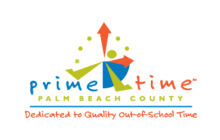9:00 am - 11:00 am
I have no doubt that the training and general content we experienced over the three-month 6-sessions will help us to provide fun and meaningful program activities for hundreds of deserving youth in our afterschool programs. Through your training sessions, you have given us the skills and opportunity to help youth to think and plan their future in STEAM. You have given us some awesome ideas to plan and work with kids at all levels. I would strongly recommend your program to anyone who is seeking a way to get kids excited about STEAM.
Herbert LoweCounselorGalaxy E3 Afterschool Enrichment Program
STEAM Training Series – Part 6
This cohort is a “hybrid” learning experience. By registering for this series, you are committing to attending all training sessions both in-person and virtual.
Participants are REQUIRED TO ATTEND ALL TRAININGS in the series and complete two modeling sessions at their program site in addition to implementation assignments in between trainings.
Science, Technology, Engineering, Art and Math (STEAM) is everywhere. STEAM learning in OST allows youth to connect with STEAM to their everyday life. Hands-on, STEAM activities are not only fun, but will increase youth’s interest and knowledge where they can imagine themselves as scientists or professionals in a STEAM career.
In the STEAM training series, participants will learn and practice engaging activities that explore the worlds of science, technology, engineering, arts, and math. This series boosts practitioners’ confidence in science knowledge, demonstrates activities that link youth development strategies and intentional STEAM learning opportunities, and guides participants in implementing STEAM in their program that is easy and effective.
Upon successful completion of this training series, follow up assignment(s), and modeling sessions the participant will earn 20 clock hours (2 CEUs) of training.
Training schedule is hybrid with three in-person sessions.
Part 1 – Believe: October 4, 2024 **IN PERSON**
Part 2 – The 5E’s Instructional Method: October 11, 2024 **IN PERSON**
Part 3 – The 5E’s Competencies: November 8, 2024
Part 4 – Strengthening the Lesson Plans: November 22, 2024
Part 5 – STEAM Curriculum: December 6, 2024
Part 6 – Individualized Approach to STEAM: December 6, 2024 **IN PERSON**
STEAM 1: Believe
Training Objectives:
Participants will:
- Recall why STEAM in afterschool programs is important.
- Discuss the role of the afterschool STEAM practitioner in creating quality informal science experiences.
- Identify youth development strategies that are infused in STEAM learning.
STEAM 2: The 5E’s Instructional Method
Training Objectives:
Participants will:
- Identify the stages of the 5E’s Instructional Method
- Utilize purposeful, open-ended questions when implementing STEAM activities.
STEAM 3: The 5E’s Competencies
Training Objectives:
Participants will:
- Discuss STEAM-related stereotypes and the impact on youth.
- Develop STEAM activities and lessons using the 5E’s competencies.
STEAM 4: Strengthening the Lesson Plans
Training Objectives:
Participants will:
- Compare innovative and unique STEAM-related careers.
- Identify ways to strengthen lesson plans and infuse learning into STEAM activities.
STEAM 5: STEAM Curriculum
Training Objectives:
Participants will:
- Describe and utilize established STEAM curriculum options.
- Create lesson plans that make STEAM learning both meaningful and fun.
STEAM 6: Individualized Approach to STEAM
Training Objectives:
Participants will:
- Identify Prime Time Palm Beach County expanded learning opportunities (ELOs) as an additional STEM resource.
- Determine ways to overcome obstacles in a new or existing STEAM program.
- Create a plan for sustaining STEAM efforts in their afterschool programs.
Core Knowledge, Skills and Competencies Addressed (CKSCs):
Learning Environments and Curriculum
Physical Environment and Activities
Identify – A. Recognizes the importance of creating a developmentally and culturally responsive learning environment and following a curriculum.
Apply – D. Creates engaging, physically, emotionally safe, and inclusive environments to encourage play, exploration, and learning across developmental domains.
Primary QIS Scales Addressed
II. Supportive Environment
II-J. Active Learning
II-J-1. Young people engage with materials or ideas
IV. Engaging Environment
IV-O. Furthering Learning
IV-O-3. Encourage extending knowledge
IV-O-4. Encourage logical reasoning
IV-O-5. Guide discovery

